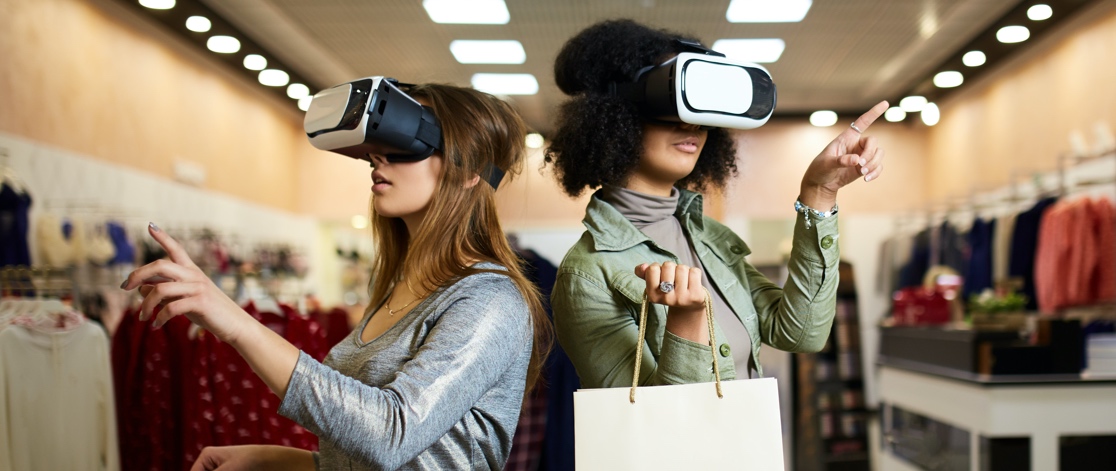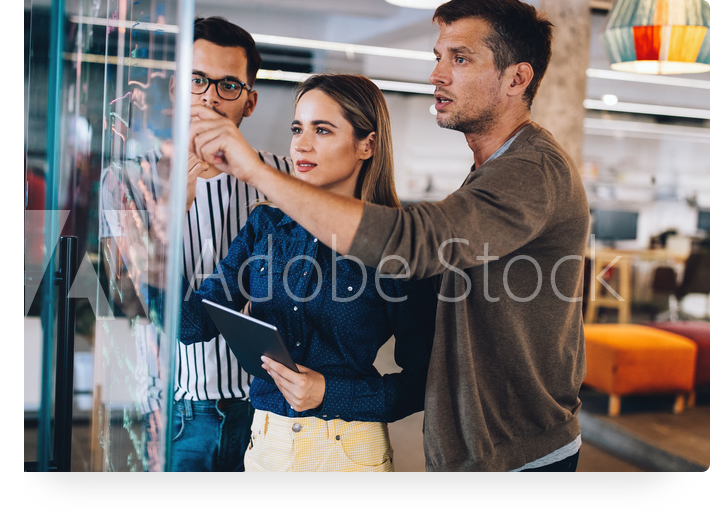INNOVATION
5 Ways Retailers Are Using Emerging Tech to Achieve Business Goals
INNOVATION
5 Ways Retailers Are Using Emerging Tech to Achieve Business Goals


When people hear the term “emerging technologies” they often think of some far-off, magical concepts that are still-in-development and won’t see the light of day for years to come.

The (Use) Case for Emerging Technology
While it’s certainly exciting to think about all of the technologies that we’ll have at our fingertips in future, here are 5 real-world examples of emerging technologies that retailers are actively incorporating into their projects today. Regardless of your particular business goals, these 5 examples are sure to help you grow your business and provide your customers with the best user experience possible:
1. Digital Crypto Payments to Broaden Appeal to New Customer Segments
With alternate payment options growing in popularity, an apparel retailer is offering its customers the option to pay for their products with alternate payment forms, such as cryptocurrency. According to a recent study, almost 50% of U.S. millennials feel very or somewhat comfortable using cryptocurrencies, which, for this retailer, was reason enough to offer it as a payment option. Of course, crypto payments may be more appealing to younger or less risk-averse consumers, but even if your customers choose to opt for more traditional payment methods, offering alternate payment forms will help establish your brand as being forward-thinking and digitally mature.
2. Augmented Reality to Shorten the Sales Cycle
Selling mattresses can cause sleeplessness for retailers, especially since competition is strong and sales cycles can be longer than ideal. In an effort to shorten the time between customer evaluation and sale, one mattress company opted to utilize augmented reality (AR) technology in-store to give customers access to more in-depth product feature information, competitive pricing, customer reviews, and product testing results. In another example, a furniture company leveraged augmented reality on its website to help customers visualize what a specific piece of furniture would look like in their own house or apartment. Instead of a salesperson telling the customer to “imagine” what the sofa would look like in their living room, AR actually showed them.

3. 3D Modeling to Increase Conversions
Connecting electronic components is rarely a straightforward affair. According to a recent study, 65% of consumer electronic returns happen during the set up. One electronics company decided to combat this by using 3D modeling to display both the front and back of their products, enabling customers to have a clearer sense of what hooking up the product will entail, even prior to the purchase. In another example, an apparel retailer utilized 3D modeling to show customers all angles of their items, giving them a much better idea of how that particular piece of clothing will look and fit across the customer’s entire body.
4. Voice Technologies to Increase Purchase Frequency
When it comes to least favorite chores, shopping for groceries is right up there with doing the dishes. One grocery store is doing its part to help make that particular chore a little easier. By integrating voice technology into its mobile application, their customers were able to easily (and verbally) create shopping lists and add reminders or prompts to add repeat-purchase items, such as laundry detergent, toothpaste, toilet paper, pet food, etc. At the other end of the shopping spectrum, an upscale clothing retailer offered its customers the ability to find locations, operating hours, request coupons, and, of course, search and order products all through voice technology on its mobile app.
5. Augmented Reality to Increase Post-Purchase Satisfaction
As we’ve all experienced at one time or another, the instructions for assembling furniture can be, shall we say, challenging to understand. Heck, there’s a whole industry dedicated to assembling other people’s furniture. In an effort to improve customer experience, one furniture company used augmented reality technology to supply its customers with instructions on how to assemble items at home with greater ease. Instead of having to read complicated, often indecipherable black and white printed instructions, customers could now scan a QR code to watch a how-to video with someone virtually assembling the exact product he/she just purchased. Making the assembly process easier makes for a happier customer, and one that is more inclined to make additional purchases in the future.

You Don't Have to Wait for Emerging Technologies. They're Already Here.
While it does take quite some time for certain technological advancements to come to fruition, the truth is there are plenty of emerging technologies that are already having a positive impact on many different kinds of businesses. For retailers that find themselves in the ultra-competitive marketplace of today, those words should be music to your ears. So, while patience might be a virtue, you don’t need much when it comes to emerging technologies affecting retailers’ bottom lines.
Want even more educational content?
Subscribe below to get timely content delivered to your inbox,
or fill out the form below to speak to a Peakster about your next project.

DIGITAL MARKETING
Top 10 Photos of Developers Staring At Screens

DIGITAL STRATEGY
5 Ways Retailers Can Make Influencer Marketing More Influential

ECOMMERCE